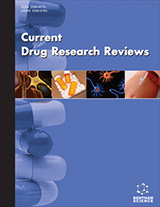
Abstract
Background: Dermatophytosis is the most common dermatological disorder worldwide. Many drugs are available in the market for the treatment of dermatophytosis, but they have had limited success due to the stratum corneum barrier, antifungal resistance, drug permeation, drug retention in skin layers, etc. Thus, there is a constant need for new topical compounds that are effective against dermatophytosis. Berberine-hydrochloride is an attractive candidate to become an antifungal drug, and by using nanotechnology, it achieves deeper penetration in skin layers with enhanced permeability through the stratum corneum.
Methods: In this study, we developed an oleic acid-containing berberine-hydrochloride-loaded transethosomal gel for effective treatment of dermatophytosis by Trichophyton rubrum. Berberine- hydrochloride-loaded transethosomal gels were fabricated using the hot homogenization method, followed by the incorporation of transethosomes into the gel-based system using carbopol 934. Transethosomal gel was characterized by physicochemical properties, in vitro drug release, ex-vivo permeation studies, CLSM visualization, antifungal activity, histopathological evaluation, and dermatokinetic study.
Results: Berberine-hydrochloride-loaded transethosomes seemed to be spherical and found in a range between 200-300 nm. Berberine-hydrochloride-loaded transethosomal gel formulation also exhibited controlled ex-vivo permeation of berberine-hydrochloride over 24 hr through excised rat skin, and CLSM confirmed deeper penetration into skin layers. The in vivo study revealed that transethosomal gel had a healing effect on the skin of Wistar rats infected with Trichophyton rubrum and was better than luliconazole cream. The histopathological evaluation confirmed its safety, and the dermatokinetic study showed transethosomal gel superiority over marketed cream.
Conclusion: Therefore, the incorporation of berberine hydrochloride-loaded transethosomal nanosystems into the gel has the potential to enhance antifungal activity and permeation through transdermal drug delivery.
Keywords: Berberine-hydrochloride, dermatophytosis, transethosomal gel, Trichophyton rubrum, antifungal, nanotechnology.
[http://dx.doi.org/10.25259/IJDVL_301_20] [PMID: 33769736]
[PMID: 28419352]
[http://dx.doi.org/10.1111/myc.12447] [PMID: 26692117]
[http://dx.doi.org/10.3923/jm.2009.229.234]
[http://dx.doi.org/10.4103/ejdv.ejdv_23_20]
[http://dx.doi.org/10.1002/ptr.2399] [PMID: 18618524]
[http://dx.doi.org/10.1016/j.atherosclerosis.2017.11.023] [PMID: 29202334]
[http://dx.doi.org/10.1016/j.bmcl.2012.12.036] [PMID: 23312473]
[PMID: 4555485]
[PMID: 7282933]
[http://dx.doi.org/10.1186/1471-2407-8-58] [PMID: 18294404]
[http://dx.doi.org/10.1097/CAD.0b013e328330d95b] [PMID: 19704371]
[http://dx.doi.org/10.1155/2015/905749] [PMID: 25861268]
[http://dx.doi.org/10.1038/nm1135] [PMID: 15531889]
[http://dx.doi.org/10.1002/ptr.1661] [PMID: 15934023]
[PMID: 26191220]
[http://dx.doi.org/10.3389/fmolb.2018.00021] [PMID: 29616225]
[http://dx.doi.org/10.1016/j.jconrel.2016.09.008] [PMID: 27620074]
[http://dx.doi.org/10.1111/j.1600-0846.2008.00316.x] [PMID: 19159369]
[http://dx.doi.org/10.5772/intechopen.81152]
[http://dx.doi.org/10.1016/j.colsurfb.2011.12.004] [PMID: 22205066]
[http://dx.doi.org/10.1155/2020/3207909]
[http://dx.doi.org/10.1007/s13346-017-0415-2] [PMID: 28776220]
[http://dx.doi.org/10.1155/2012/125384] [PMID: 22619489]
[http://dx.doi.org/10.2147/IJN.S196771] [PMID: 30936696]
[http://dx.doi.org/10.1016/j.biopha.2018.09.045] [PMID: 30243089]
[http://dx.doi.org/10.3314/jjmm.50.085] [PMID: 19430182]
[http://dx.doi.org/10.1080/21691401.2018.1469025] [PMID: 29730964]
[http://dx.doi.org/10.1080/08982104.2018.1430831] [PMID: 29355060]
 15
15



























